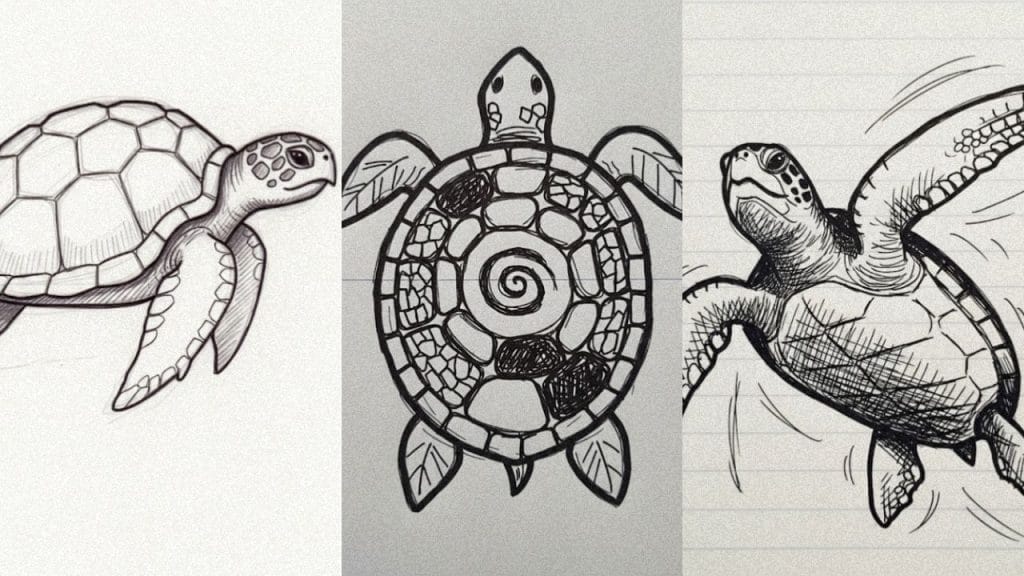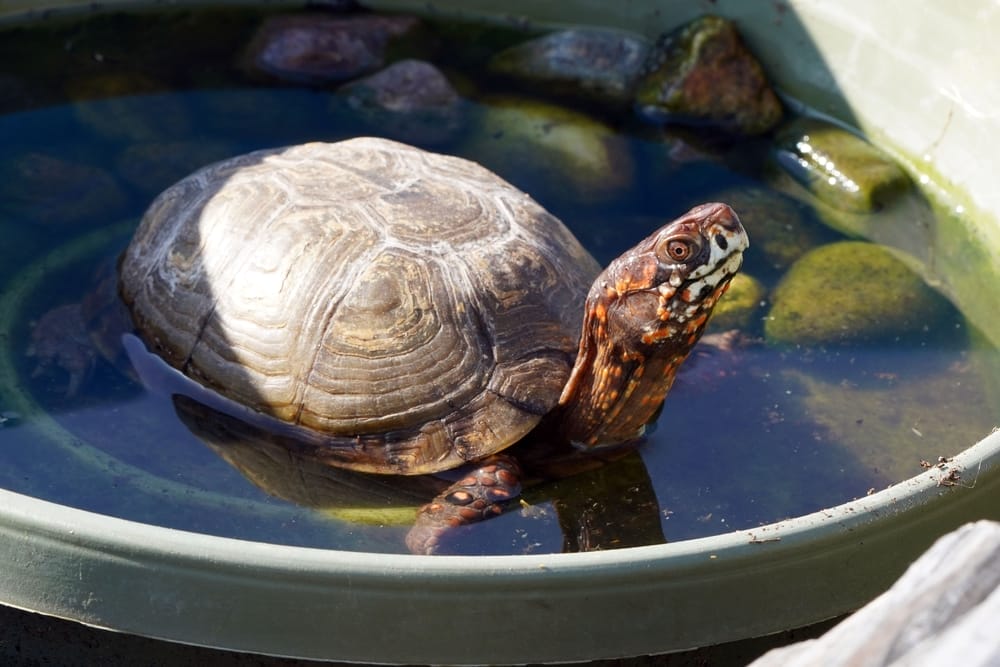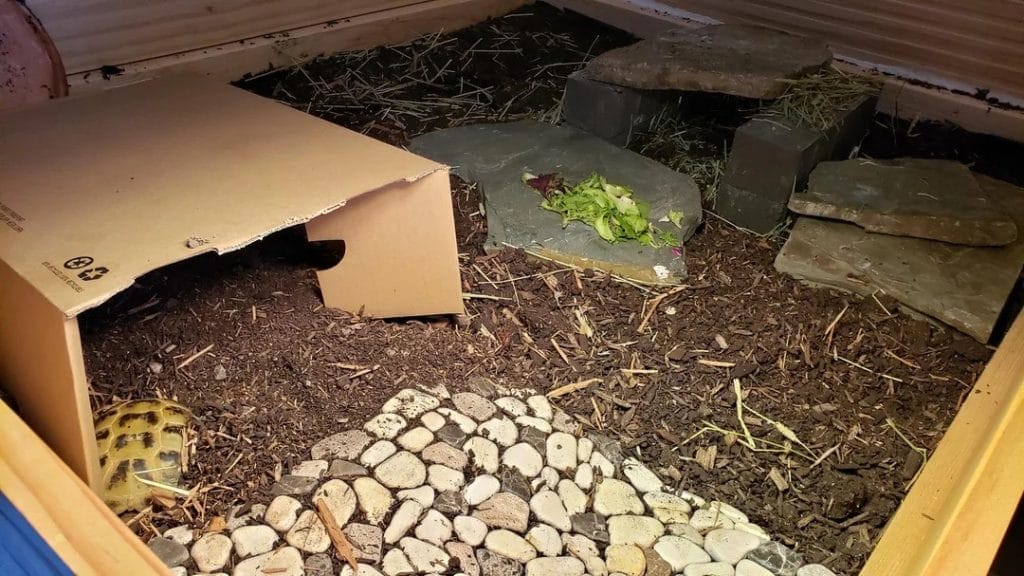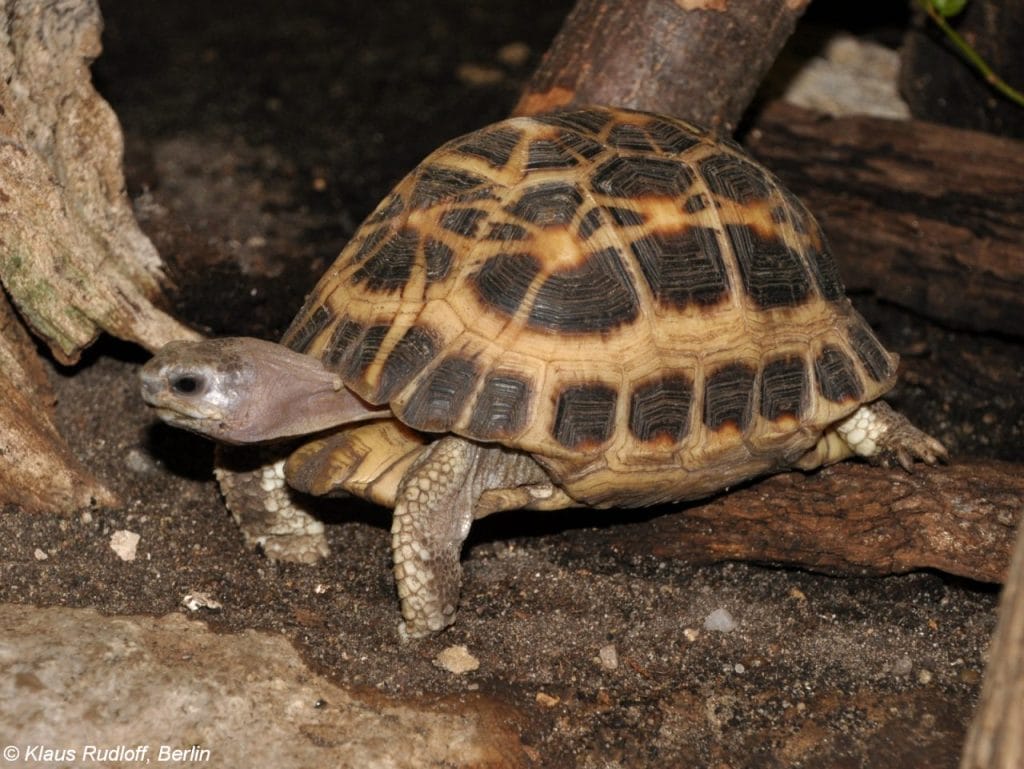Turtle Flipped Upside Down: Can They Survive? [Expert Answer]

This post was created with help from AI tools and carefully reviewed by a human (Muntaseer Rahman). For more on how we use AI on this site, check out our Editorial Policy.
Yes, most turtles can flip themselves over when they end up on their backs. They use their head, neck, and legs to rock back and forth until they gain enough momentum to roll back onto their feet.
But here’s the thing—not all turtles are equally good at it. Some species struggle more than others, and factors like shell shape, age, and where they’re stuck can make a huge difference between life and death.
In this article, you’ll learn exactly how turtles flip themselves, why they end up upside down in the first place, what dangers they face, and most importantly—what you should do if you find one stuck on its back.
Quick Answer: What You Need to Know Right Now
- Most turtles CAN flip themselves over using their head, neck, and legs
- Turtles with flatter shells flip easier than those with rounded shells
- Time matters—turtles can survive 5 minutes to several hours upside down (depends on conditions)
- Shallow water is deadly—turtles can drown if they can’t right themselves
- Help immediately if you find one stuck—gently flip it over by the shell edges
How Do Turtles Flip Themselves Over?
Turtles are way smarter than people give them credit for.
When they’re stuck on their backs, they don’t just give up. They use a combination of body parts to create leverage and momentum.
The Head-Neck Technique
First, the turtle extends its head out to one side. This shifts the body weight slightly and creates an angle.
Think of it like using your arm to push yourself up from the ground—same idea, different anatomy.
The Leg Push
Once the turtle has tilted itself with its head, it uses its legs to push off the ground. The combination of the tilted angle plus the leg push gives them enough force to roll onto their side.
If they’re lucky and the surface isn’t too smooth, they’ll land right-side up.
Shell Shape Matters Big Time
Not all shells are created equal.
Turtles with dome-shaped shells (like box turtles) actually have an easier time flipping. Their rounded shells are naturally unstable when upside down, so they rock more easily.
Flat-shelled turtles (like painted turtles or sliders) have a tougher time because their shells are more stable in both positions.
This Hilarious Turtle Book Might Know Your Pet Better Than You Do
Let’s be real—most turtle care guides feel like reading a textbook written by a sleep-deprived zookeeper.
This one’s not that.
Told from the snarky point of view of a grumpy, judgmental turtle, 21 Turtle Truths You’ll Never Read in a Care Guide is packed with sarcasm, sass, and surprisingly useful insights.
And hey—you don’t have to commit to the whole thing just yet.
Grab 2 free truths from the ebook and get a taste of what your turtle really thinks about your setup, your food choices, and that weird plastic palm tree.
It’s funny, it’s honest, and if you’ve ever owned a turtle who glares at you like you’re the problem—you’ll feel seen.
Why Do Turtles End Up Upside Down?
It’s not like they flip themselves over on purpose.
Here are the most common reasons:
Fighting With Other Turtles
Male turtles can be aggressive, especially during breeding season. If you have multiple males in a tank with females, they’ll fight for attention.
The stronger male might flip the weaker one over. It’s brutal, but it happens.
Climbing Accidents
Turtles are curious little explorers. They’ll try to climb rocks, logs, decorations—pretty much anything in their path.
Problem is, they’re not great climbers. One wrong move and they tumble backward onto their shell.
Respiratory Infections
This one’s serious. Turtles with respiratory infections lose their buoyancy in water.
They start swimming lopsided, which can cause them to flip over. If your turtle keeps ending up on its back, this could be the reason.
Look for signs like wheezing, nasal discharge, swollen eyes, or open-mouth breathing.
Tank Setup Issues
Sometimes it’s just bad tank design. Steep basking platforms, slippery decorations, or water that’s too shallow can all cause turtles to flip and struggle to right themselves.
Mating Mishaps
Male turtles have to mount females to mate. It’s a risky position and males can easily fall backward during or after mating.
They might stay upside down for a while if they can’t find leverage to flip back.
How Long Can a Turtle Survive Upside Down?
There’s no one-size-fits-all answer here.
It depends on several factors: age, health, location, temperature, and whether they’re on land or in water.
General Timeframe
Most healthy adult turtles can survive anywhere from 5 minutes to several hours upside down. Baby turtles? Way less time—maybe 10 minutes max.
Older turtles with health issues also struggle more and have less time.
Location Makes or Breaks Survival
On land in shade: A few hours, maybe longer if the turtle is healthy and the weather is mild.
On land in direct sun: Way shorter—maybe 1-2 hours before overheating and dehydration become deadly.
In deep water: Better chance of flipping themselves because they have room to maneuver.
In shallow water: Super dangerous. If they can’t flip, they’ll drown within minutes because they can’t lift their head to breathe.
What Happens to Their Body
When a turtle is upside down, its internal organs press down on its lungs. This makes breathing difficult and stressful.
Add in direct sunlight, and the plastron (bottom shell) heats up fast, causing rapid dehydration.
In water, if they can’t get air, they’ll drown. Even though some aquatic turtles can absorb oxygen through their skin, it’s not enough to keep them alive long-term.
Dangers of Being Stuck Upside Down
Being flipped isn’t just uncomfortable—it’s life-threatening.
No Access to Food or Water
A turtle on its back can’t move to eat or drink. While turtles can go weeks without food, they can only go 6-8 hours without water in warm, dry conditions.
Dehydration sets in fast, especially in hot weather.
Predators Have an Easy Meal
Turtles are sitting ducks (or sitting turtles?) when they’re upside down. They can still hide in their shell, but they can’t run away.
Predators like raccoons, birds, or even fire ants can attack. Fire ants are especially brutal—they swarm and inflict serious damage.
Organ Damage and Breathing Problems
The weight of the turtle’s organs pressing on the lungs can cause serious issues. You might notice panting or wheezing sounds.
Prolonged pressure can damage the lungs permanently.
Overheating and Heatstroke
Turtles can’t regulate their body temperature internally. When their plastron is exposed to direct sunlight, it heats up crazy fast.
Heatstroke can kill a turtle in under an hour if it’s a hot day.
Drowning Risk in Water
If a turtle flips in shallow water and can’t right itself, it’ll drown. They need to lift their heads above water to breathe.
Deep water gives them more room to maneuver and flip back, but shallow water is a death trap.
What NOT to Do When Helping a Turtle
Before we get to the right way to help, let’s talk about what NOT to do.
Don’t Flip Them Too Fast
If you find a turtle that’s been upside down for a while, don’t just yank it over. Flip it slowly and gently to avoid causing torsion of the bowel (basically twisting their guts).
Take a few seconds to do it right.
Don’t Relocate Them
Unless the turtle is in immediate danger (like in the middle of a road), don’t move it to a new location. Turtles have strong ties to their home range.
Moving them can mess with their ability to find food, shelter, and mates.
Don’t Grab Them by the Legs or Head
Always hold a turtle by the sides of its shell. Never grab the legs, tail, or head—you could seriously injure them.
Plus, a stressed turtle might bite you.
Don’t Use Vitashell or Oily Products
If the turtle’s shell looks dry, don’t put oily products on it. Things like Vitashell can clog the shell’s pores and lead to shell rot.
Instead, focus on proper humidity and regular soaking.
How to Safely Help an Upside Down Turtle
Alright, here’s exactly what you should do if you find a turtle on its back.
Step 1: Put on Gloves
Turtles can carry parasites and bacteria. Wear thick rubber gloves to protect yourself.
Also, a stressed turtle might bite, so keep your fingers away from its mouth.
Step 2: Assess the Situation
Before you touch the turtle, take a quick look. Is it injured? Bleeding? Having trouble breathing?
If it looks healthy and it’s not in immediate danger, it might flip itself given enough time. But if it’s been there a while or it’s in a risky spot, help immediately.
Step 3: Flip Gently by the Shell
Grab the turtle by the sides of its shell (not the front or back). Slowly and gently turn it right-side up.
Don’t rush this step, especially if the turtle has been stuck for a while.
Step 4: Check for Dehydration
Look at its eyes—are they sunken? Check its mouth—is it dry? Did it urinate when you flipped it?
If you see signs of dehydration, the turtle needs fluids. For wild turtles, move them to shade and let them recover naturally. For pet turtles, give them a shallow water soak.
Step 5: Move to Shade if Outdoors
If you found the turtle outside in the sun, move it to a shaded area after flipping it. Let it cool down and recover before it moves on.
Don’t just flip it and walk away if it’s clearly stressed or overheated.
Step 6: Monitor for Signs of Illness
If the turtle seems weak, wheezy, or won’t move after being flipped, it might need a vet. Respiratory infections are common in turtles and can be deadly if untreated.
Watch for nasal discharge, swollen eyes, or bubbling from the mouth.
When to See a Vet (This is Serious)
Not every flip-over situation needs a vet trip, but some definitely do.
Go to the Vet If You Notice:
- Wheezing or open-mouth breathing after being flipped
- Swollen eyes or nasal discharge (signs of respiratory infection)
- Lethargy or refusal to move even after recovering
- Shell damage or bleeding from the incident
- Repeated flipping over multiple days (something’s wrong with health or setup)
Respiratory infections are the most common reason turtles lose buoyancy and flip. Early treatment with antibiotics can save your turtle’s life.
Don’t wait if your turtle shows any of these symptoms.
How to Prevent Your Pet Turtle From Flipping Over
Prevention is way easier than rescue.
Fix Your Tank Setup
Make sure your water level is deeper than the width of your turtle. Shallow water makes it easy for them to flip and hard for them to right themselves.
Remove any steep or unstable decorations that could cause falls.
Use Non-Slip Surfaces
Add rocks, driftwood, or other textured surfaces to give your turtle something to grip and push against if they do flip.
Avoid super smooth glass or plastic decorations.
Separate Fighting Males
If you have multiple male turtles fighting over females, separate them into different tanks. Boredom can also cause aggression, so make sure each turtle has enough space and enrichment.
A good rule of thumb: 10 gallons of water per inch of shell length.
Provide Proper Basking Areas
Your basking platform shouldn’t have a steep incline. It should be easy for your turtle to climb on and off without the risk of falling backward.
Test it yourself—if it seems unstable, your turtle will struggle too.
Keep an Eye on Health
Regular health checks can catch respiratory infections early. Watch for changes in swimming behavior, appetite, or breathing.
A healthy turtle is less likely to flip and more likely to flip back if they do.
What If My Baby Turtle Keeps Flipping?
Baby turtles flip more often than adults. Their shells are lighter and they’re less coordinated.
Plus, they’re more vulnerable to health issues like respiratory infections.
Common Causes in Babies
- Respiratory infection causing buoyancy issues
- Tank decorations that are too tall or steep
- Water that’s too shallow
- Poor climbing skills (they’re still learning)
What to Do
First, check your tank setup. Make sure the water is deep enough and decorations aren’t creating fall hazards.
Second, watch for health issues. If your baby turtle is swimming lopsided, wheezing, or has discharge from eyes or nose, get to a vet ASAP.
Baby turtles can go downhill fast, so don’t wait.
Can Turtles Flip Themselves in Water?
Yes, but it depends on water depth.
In deep water, turtles have much more room to maneuver. They can use their legs and flippers to twist their body and roll back over.
In shallow water? It’s way harder. If the water isn’t deep enough for them to fully extend their legs and neck, they’re stuck.
The Drowning Risk
Turtles need to lift their heads above water to breathe. If they’re flipped in shallow water and can’t right themselves, they’ll drown.
Some aquatic turtles can absorb oxygen through their skin, but it’s not enough to survive long-term.
Do Different Turtle Species Flip Differently?
Absolutely.
Box Turtles (Dome Shells)
Box turtles have high, rounded shells that are naturally unstable when upside down. This actually helps them flip more easily.
They rock back and forth and use their legs to push off.
Red-Eared Sliders and Painted Turtles (Flat Shells)
These guys have flatter shells, which are more stable in both positions. It takes more effort for them to flip, and they need a textured surface to push against.
In smooth environments, they might struggle.
Sea Turtles (Long Flippers)
Sea turtles have longer limbs, giving them better leverage. They’re generally good at righting themselves, especially in water.
On land, though, they can struggle more.
Older vs. Younger Turtles
Research shows that younger turtles flip faster than older ones. They feel more vulnerable and have a greater sense of urgency.
Older turtles have sturdier shells and know they’re safer from predators, so they don’t panic as much. But they also have less stamina.
Frequently Asked Questions
Can a turtle die from being upside down?
Yes, absolutely. If a turtle is stuck upside down for too long, it can die from dehydration, overheating, organ damage, drowning (if in water), or predator attacks. Time is critical—help them as soon as you can.
How do I know if my turtle is sick after being flipped?
Watch for wheezing, nasal discharge, swollen eyes, lethargy, or difficulty breathing. If your turtle won’t move or eat after being flipped, take it to a vet. These are signs of respiratory infection or internal injury.
Should I help a wild turtle that’s upside down?
Yes, if it’s safe to do so. Gently flip the turtle right-side up by holding the sides of its shell. If it’s on a road, move it to the side of the road in the direction it was heading. Don’t relocate it to a new area.
Why does my turtle keep flipping over in its tank?
Repeated flipping usually means something’s wrong—either with health or tank setup. Check for respiratory infections (wheezing, swimming lopsided), fighting between turtles, or tank issues like shallow water or steep decorations. Fix the root cause.
Can turtles breathe when they’re upside down?
Yes, but it’s difficult. Their organs press down on their lungs, making breathing hard and stressful. In water, if they can’t lift their head to breathe, they’ll drown. They can survive upside down for a limited time—anywhere from 5 minutes to a few hours.
Final Thoughts
Turtles are tougher than they look, and most can flip themselves over when they end up on their backs.
But they’re not invincible. Shell shape, age, health, and environment all play a huge role in whether they can save themselves or not.
If you ever find a turtle stuck upside down—whether it’s your pet or a wild one—don’t hesitate to help. A gentle flip can literally save its life.
And if you’re a turtle owner, take a hard look at your tank setup. Prevention is always better than panic.

About Author
Muntaseer Rahman started keeping pet turtles back in 2013. He also owns the largest Turtle & Tortoise Facebook community in Bangladesh. These days he is mostly active on Facebook.











